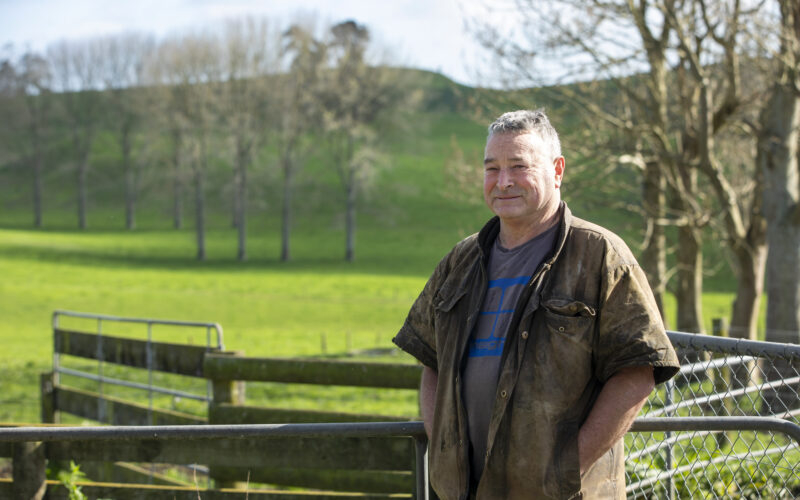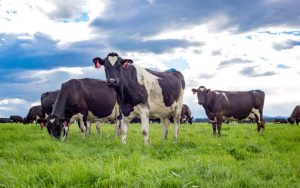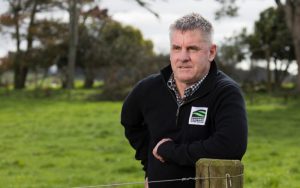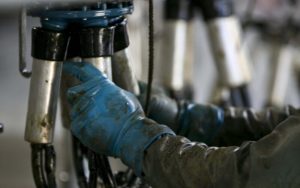
Dung beetles are leading the way as a 116-year-old family farm pools its scientific and professional expertise to find a better way to farm.
When the Coubrough family employed a small army to help out on the land at their dairy farm in Waikato 18 months ago, one advantage was that feeding the new arrivals would never be a problem.
Trialling dung beetles seemed a no-brainer on the 76 hectare farm between Putāruru and Tirau after fifth-generation farmer Linda Coubrough looked into the advantages.
“We’re all about biological farming as much as we can, so why wouldn’t we want to try these animals that can get dung back into the ground at no cost to us and see what can grow from putting the nutrients back into the soil?
“We’re caretakers and we’ve been here since 1907 so we want to look after the land. Yes, dung beetles are introduced species, but we all come from science backgrounds – I studied geology, my brother Tim did chemical engineering with nanotechnology and biological science, Dad is an engineer extraordinaire, and Mum’s a physiotherapist – so we’re always looking for new things to try.”
The beetle trial, which involved the release of around 1500 of two species of the insects into fresh cow pats in autumn 2023, has inadvertently led to other innovations on the farm, which have had spin-offs in terms of environmental gains as well as money saving.
“Linda’s research led to us discovering that dung beetles are susceptible to a lot of the drenches so that forced us to go and look at our calves and ask why we were drenching them,” said dad Brett. “We realised we were doing it because everybody says that’s what you do. When we looked at alternatives, together with our vets, who’re a great source of knowledge, we came to a solution.”
Instead of drenching calves as a matter of course, over the past 12 months regular faecal samples have been collected from calves coming into the yard to be weighed. The samples are taken to Putāruru’s Vetora veterinary clinic for testing, carried there in an ordinary egg carton by one of the family members.
“If there’re no worms, we don’t drench,” said Brett.
“In fact we haven’t needed to in the whole time we’ve been testing. So that’s $14 a round of testing versus a couple of grand for a bottle of the drench.”

The Coubroughs think their ancestors would be proud of their stewardship of the land. Brett’s great-grandfather was an engineer, and had come across from Scotland, helping build the Edendale dairy factory in Southland.
“Then he was involved in a flax works south of Auckland before moving to the Tirau area where they were doing chaff cutting for horses before these blocks came up for sale and he bought one.”
Brett grew up on the farm and was involved in milking the cows before school until he left at 17 to study electrical engineering at polytech, then taking an apprenticeship as an electrician. He spent many years working all over the globe, eventually settling back in New Zealand with his Dutch wife Joke (pronounced Yoka), working in a pulp and paper mill in Kawerau and living in Whakatāne where the couple initially brought up Linda and Tim.
After his mother died in 2002 Brett had to take over the farm, managing share milkers from afar for just over 10 years before opting to relocate the family and build a house on the land in 2003. In 2017 they decided to take control, buying a herd, with Tim and Joke managing the farm between them. Two years later Brett gave up his full-time control systems engineering role to join them.
Having started from scratch, and with new perspectives from different careers, the family decided to invest in technology to help make managing the farm independently more achievable.
One purchase that is still working greatly to their advantage, said Brett, is the Lely automatic calf-feeding system. Monitoring the amount of milk each calf has access to via the RFID ear tag is one reason, he said, the farm’s calves grow at a good rate and remain healthy.
“This system is trying to create as much of a natural process as possible,” said Linda – who gave up her job as a police officer in Auckland after realising she loved working on the land.
“The calves come [to the feeding system] when they want a drink for a feed plan of 80 days, and their first 40 days they are allowed two litres every two hours. From then on, they start to taper off.”
The Coubroughs are currently trialling new teats on the automatic feeders, in conjunction with Milk Bar, which specialises in controlled-flow feeding teats.

“We were finding with the teats supplied by Lely that the calves were feeding at too rapid a rate, about a litre a minute,” said Linda.
“The new controlled-flow teats we’re trialling can operate in any direction and we’ve been studying the data which shows each calf’s feeding behaviours.
“It’s a great improvement. Last year, for instance, some calves were drinking 16 to 18 litres a day, which was way too much. They were just guzzling and not getting that full feeling, or the nutrients. So what we’re trying to achieve with the new teat is that feeling of fullness and to get the proper saliva production as well, for their immunity, and digestive enzymes.
“We’re aiming for three to four litres per minute, which is closer to what it would be if they were feeding on mum. I’m very happy with the teat change, cross suckling has been reduced and the calves have slowed down on drinking speeds to on average eight litres a day, spread out over 24 hours.
“The vets have commented on how shiny their coats are and how healthy they’re looking.”
These days the milking herd of 150 is a Kiwi cross of Jersey and Friesian. Brett’s retired but still does bits and pieces, especially at busier times. Tim works full-time, including covering all the grass management and herd management, and Linda works part-time, including rearing the calves and milking.
Beef calves are Charolais.
“We raise them until about 100kg,” said Tim. “That’s usually around three months and then they go to the sales.”
Linda particularly likes that the Charolais don’t need disbudding.

“As the genetics improve, my next project using LIC is to breed more hornless replacement animals,” she said.
Collars are used to relay health data and for mating. When last year one animal seemed to be suffering, again they worked with their vet to come up with a solution.
“Blue cow, as she’s now known because we bought her a blue coat to help with her condition, had terrible eczema. With the vets’ help we started regularly testing spore counts and managed her condition by adding zinc to her diet. The dosage depends on the spore count levels.”
The farm now acts as a sampling centre, with its pasture spore counts published in the veterinary practice to act as a guide for other local farmers.
Earlier this year the property was officially acknowledged as a Century Farm after Linda’s love of history led to the submission of an application for recognition of the longevity.
“It was backdated as the farm’s actually 116 years old,” she said. “We wrote about our forefathers and it’s a direct Coubrough line, which is actually quite impressive.”
The next goal is to get to 150 years. In the meantime it’s hoped the dung beetle colony will become so well established it will have also expanded out to neighbouring farms.
Said Brett: “It takes around five years before we’re likely to see any real impact of the work the dung beetles are doing. I think our ancestors would be impressed, not just with the fact we’re willing to try new things, but that we’re still dairying and we’ve been supplying the same company all the way through. I’m certainly pretty proud of that.”
You can now read the most important #news on #eDairyNews #Whatsapp channels!!!
🇺🇸 eDairy News INGLÊS: https://whatsapp.com/channel/0029VaKsjzGDTkJyIN6hcP1K

























